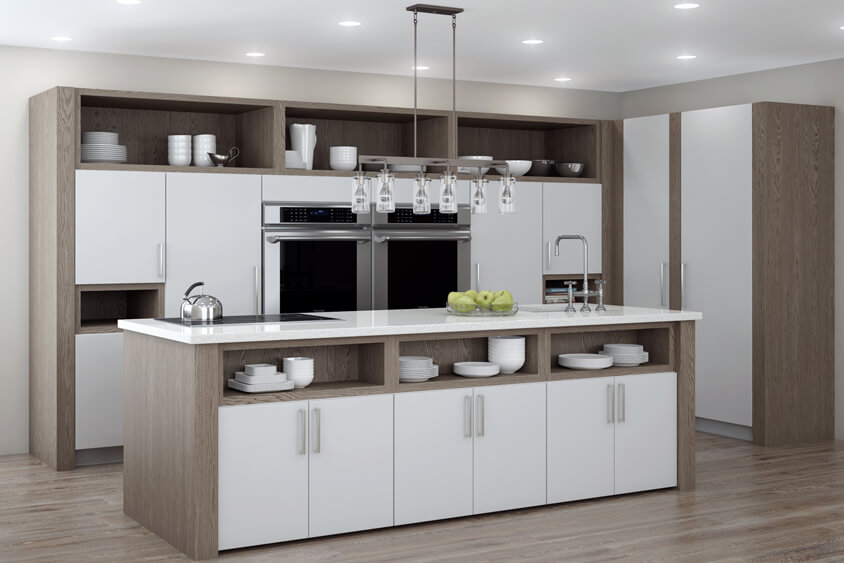What is the difference between framed and frameless cabinets?
Knowing a few of the terms used to describe cabinet construction can help you decide what style will work best for your home. In this second article of our series, we take a look at the differences between the two ways cabinets are constructed: framed and frameless.
So you’ve decided to get new cabinets. Awesome! We can’t wait to help you navigate the steps to create your beautiful new kitchen or bathroom. While we understand you’re excited and ready to get going, we’d like to discuss some important aspects of cabinet construction first. After all, the choices you make at the beginning of the design process have a huge effect on the final look and functionality of your cabinets.
Framed and Frameless Cabinet Construction
There are two main ways of building cabinets: framed and frameless. These two techniques describe how the front of the cabinet is constructed and affects how the doors and drawers may be attached. Both have their benefits, and provide different options for the layout and door options.
Framed Cabinets
Framed cabinets, as the name implies, are built with a four-sided face frame on the front of the cabinet box. This frame is made of vertical members, or stiles, and horizontal members, or rails. The doors of the cabinet are attached to the stiles of the face frame, and may have standard overlay, full overlay, or inset doors and drawers.
Frameless Cabinets
Frameless cabinets, also called European or full-access, are built without a four-sided face frame. The cabinet body is built of thicker ¾” material, and the doors are attached to the sides of the cabinet itself. This presents a sleek, modern look with very little space showing between the doors and drawers. By eliminating the face frame, the interior of the cabinet offers 10 to 15% more storage area compared to framed cabinets.
Cabinet Depot Pro Tip: Because frameless cabinets do not have the stiles and rails of their framed counterparts, the arrangement of your cabinets must be carefully considered. Be sure to stop in and talk with our experienced design team about your needs and available options before making a final decision. Together, we will create a well-balanced and effective layout for your new kitchen or bathroom!
See the Difference Between Framed and Frameless Cabinets in Our Showroom!
We hope you find this information is helpful when deciding between framed and frameless cabinets. If you would like to discuss your needs with our team of talented cabinet specialists, give us a call! We are happy to show you around our showroom and answer any questions you may have.
Read the other articles in this series:

